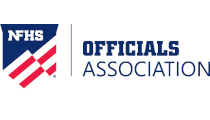Umpires: The Essential Eyes and Ears of a Track and Field Meet
By Joe Alward on May 10, 2016 officials Print
The most overlooked job in track and field officiating is likely an umpire.
The success of the sport is heavily dependent upon the quality of information the meet organization receives from its officials.
In this way, the umpire crew can be likened to the peripheral nervous system. The umpires gather sensory data and report their observations to the chief umpire, the meet referee or the assistant meet referee. These three jobs work more like the central nervous system and have the duty of trying to make sense of the incoming information. Since there is no way that one person can possibly see everything that is happening at a track and field meet, it is imperative to have observant, keen and discerning umpires who can be the “eyes and ears” of the meet.
Typically, meet directors and meet management focus most of their time and energy on acquiring their “key officials”, e.g., starters, meet referee, clerk of course, finish line judge, fully automatic time operators, etc. They typically try to get these key officials in place in the months and weeks leading up to the big championship meet(s).
The best meets are those that have their key officials in place many months in advance. After those positions are contacted and confirmed the meet director can start recruiting the many people necessary to be umpires at the championship meet(s).
There’s more to just having enough people available to umpire, too. Umpires must know where they need to be at various times during the meet for the many different events that happen in this sport. For example, the following diagram (fig. 22) displays positions for a minimum level of coverage around the track for running events that are 400 meters or longer.

In addition to knowing where to stand, umpires must know what they are to watch for and what to do when they think they have seen a possible violation. For example, following are several things that an umpire should be watching for:
- Impeding or jostling
- Illegal hurdling
- Unfair assistance or contact
- Exchanging the baton beyond the relay exchange zone
- Failing to run in a direct line on the final straight
- Running on or over the inside lane line on a curve.
Umpires must have the proper tools to do their job, too. They must have a set of flags, one white, to indicate that all is clear, and the other yellow, to indicate there is a potential violation of a rule. They also should have a pen or pencil and an umpire violation report form to record information when there’s a situation or problem. A map of the track layout with each umpire’s location is essential, and a brief list as a reminder of what to watch for is a must as well.
When an incident does occur, the umpire has a duty to make a call. If the situation warrants it the umpire should raise the yellow flag. Immediately afterward he or she should record what occurred on the violation card BEFORE talking with anyone. Once the umpires has/have had a chance to record his or her observations, the umpire should report what was documented. For example, see the following umpire violation card below:

Umpires do not disqualify athletes, but they are at the meet to help make sure the meet is as fair as possible for all competitors as inconspicuously as possible. They do this by watching and observing, recording any potential violations and, ultimately, recount what they have seen and/or heard to the chief umpire, assistant meet referee and/or meet referee.
Many of the key officials, like the starter and the finish line judge are typically recognizable officials and athletes often show their gratitude toward those more noticeable officials. However, being an umpire is a lot of work for very little or no recognition. Often, the only time the umpires are noticed is when there is a yellow flag and, consequently, a potential rule violation. In these instances, the athlete in question, and his or her coach, are generally not fond of the umpire or their call.
However, that is not to say that umpires aren’t appreciated. Umpires have a vital role in helping making sure all track and field athletes have a fair and equitable playing field and, in doing so, make it possible for the chief umpire, assistant meet referee and/or meet referee to be better equipped to do their jobs.
Joe Alward
Joe Alward is a former Alaska State Activities Association State Meet Referee and Assistant Meet Referee.
Most Recent Articles
- nfhs news NFHS Learning Center Delivers 25 Millionth Course
- Track & Field/Cross Country article Effective Communication with Athletes and Coaches
- nfhs news Player Equipment Changes Highlight 2025 High School Football Rules Revisions
- Player Equipment Changes Highlight 2025 High School Football Rules Revisions
- nfhs news Judgment Call on Second Contact Eliminated in High School Volleyball






